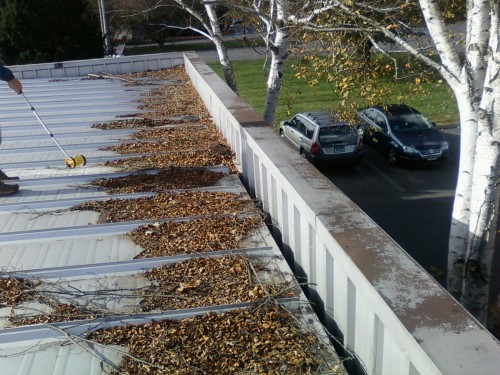Take the Time to Assess Tree Threats to Your Building
|
|
Your Builder Can Introduce You To A Reputable Arborist
Damaged or weak trees and branches may endanger people and property, and can topple power and communication lines. If there is a substantial tree near your building, consider having it periodically assessed for its health along with appropriate remedial actions.
Trees Can Cause Physical Damage To A Building
- Swaying and falling branches can cause damage to roofs and gutters.
- Branches that rub against walls will damage finish and paint.
- Leaves and broken branches can clog gutters causing ice dams and water penetration.
- Trees that are too close to buildings may provide an entry path for insects and rodents.
- Trees that are too close to buildings may be fire hazards
Tree Roots Can Damage A Foundation
Roots may extend a distance up to two-and-a-half times the height of a tree.
- Root systems that extend beneath a building can cause foundation uplift and may also exploit cracks and faults as they grow.
- Roots can leech water from the soil beneath foundations, causing buildings to settle and sink unevenly. Subsidence results in structural cracking, particularly around windows and doors.
- Leaky underground drainage pipes attract penetrating roots that will block them and cause them to burst resulting in erosion under the building.
- Root suckers can disturb sidewalk and driveway pavement.
Pay Attention To A Tree’s Structural Defect Indicators
- Dead branches or small, off-color leaves
- Cankers [where bark is sunken or missing] on branches increase the probability that the stem will break near the canker.
- Hollowed trunks
- Decay signs such as soft or crumbly wood, cavities, and fungi on root flares or branches.
- Cracks through the bark and into the tree wood indicate that the tree is failing.
- Weak V-shaped forks are prone to fracture.
- Trees that lean due to wind or root damage probably won’t recover.
- Category: Tech Tips, Seasonal Tips
- Service: Maintenance, Tech Tips
